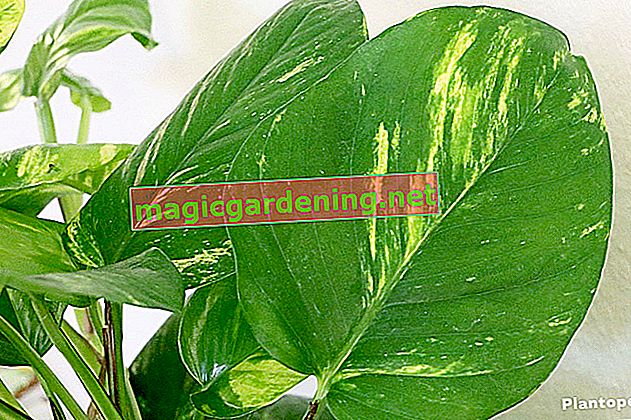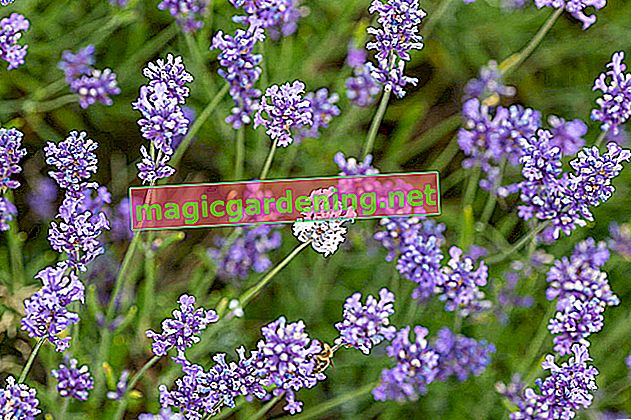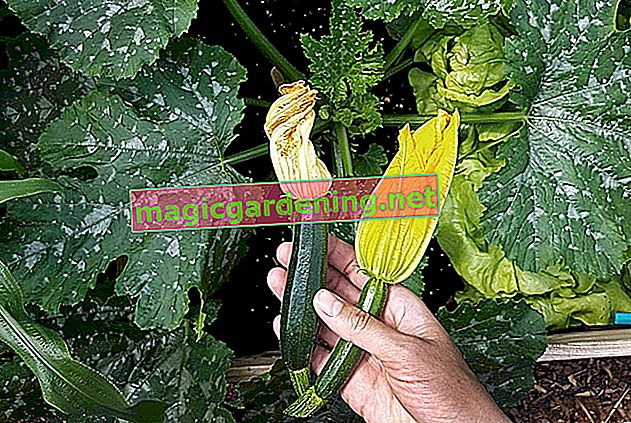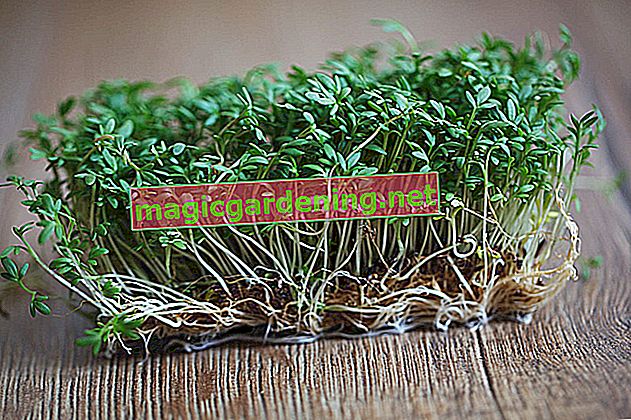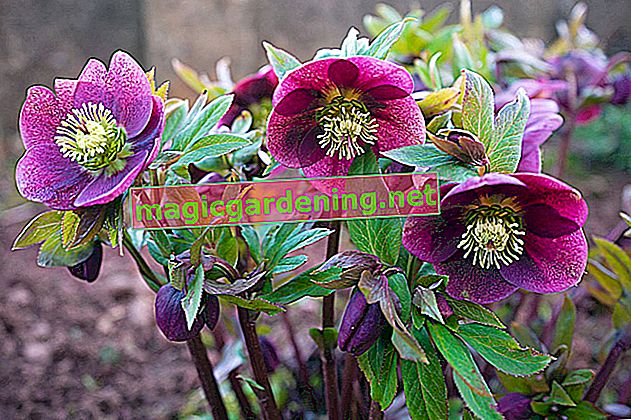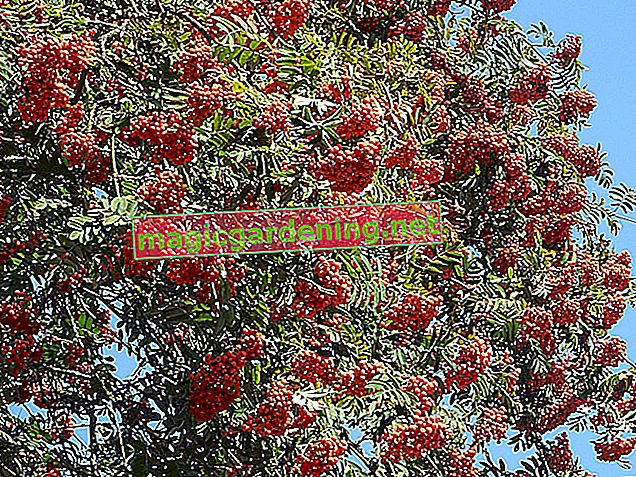
the essentials in brief
- Daisies are edible and healthy
- Daisies can be eaten raw in salads or on bread or as a tea
- The flowers can be pickled like capers
- Daisy tea eases coughs, the ointment helps with skin problems and the crushed root relieves muscle discomfort and rheumatism
Can you eat daisies?
Daisies are edible and have healthy vitamins with them. This is an interesting aspect of these distinctive wildflowers, which thrive everywhere in our regions and which are useful as swarmed bee pastures. The following table summarizes which parts of a daisy are edible with tips for delicious consumption variants:
also read
- Are Daisies Poisonous?
- Are Bellis Perennial? - This is how daisies grow in the garden
- Are Bellis hardy? - Tips about the charming daisies
| Edible Bellis parts | Enjoyment variant I | Enjoyment variant II |
|---|---|---|
| leaves | freshly picked | as a salad |
| half-open flowers | raw | edible food decoration |
| Buds | raw | pickled sour |
| opened flowers | Salad addition | as tea |
| Seeds | roasted | raw as a salad addition |
| root | not eatable |
Notes on consumption

The leaves gather to form a dense rosette of leaves close to the ground. Each leaf is composed of a petiole and a leaf blade, which are almost the same length. You don't have to separate the two components, because you can eat the leaves with the stem. The younger a daisy leaf, the tastier and healthier it is. Freshly picked and as an ingredient in spring salad, Bellis leaves are particularly tasty. In the modern kitchen, the vitamin-rich leaves spice up every green smoothie.
Typical cup-shaped flowers are characteristic of daisies. These are composed of up to 100 yellow tubular flowers, framed by white ray florets, arranged in two rows. Each flower is perched on a leafless, 5 to 20 centimeter long stem. In every growth phase you can eat the flowers raw, with or without a stem. As tightly closed buds also pickled as a delicious caper substitute. From March to June, half-open flowers delight with a slightly nutty aroma. Completely opened daisy blossoms taste slightly hot to bitter, which is recommended as an addition to a salad or tea.
Wilted flowers turn into closing fruits with tiny seeds. You can eat the seeds raw or roast them in the pan as a nutty salad. If you are not afraid of the high collection effort, the daisy seeds are a rich source of vitamins for autumn and winter.
Tips
Keep your eyes open when collecting daisies for consumption. Preferably pick the flowers in your own garden. Avoid locations on busy roads, in industrial areas and in the immediate vicinity of chemically sprayed fields. Daisies take up pollutants through their roots, which you and your family eat along with the leaves, buds and flowers.
YoutubeEating daisies - 2 recipes
With the right recipe, you can cheat the pungent, bitter taste of daisies. One of the most popular variations of the preparation transforms the beautiful buds into tasty capers substitutes. The following recipes may fire your culinary imagination to enjoy star-quality daisies:
Candied daisies
The very easy recipe uses three ingredients: 1 handful of daisies with a stem, 100 ml of water and 125 g of sugar. To prepare, follow these steps:
- Boil water in a saucepan
- Stir in sugar until all the crystals dissolve
- Take the pan off the fire and let the syrup cool down
- meanwhile, clean the daisies under running water
- Grasp the flower stalk at the lower end
- Pull the daisies through the liquid
Let the candied daisies dry on baking paper. It is faster in the oven at 50 degrees. Sugared thousand beauties decorate every spring cake. Candied daisies are ideal for sweet-toothed children as an edible decoration on the mug cake.
Pickled buds as a substitute for capers
The following daisy recipe is aimed at friends of spicy delicacies. Tightly closed flower buds act as a hearty substitute for capers with a wide range of uses. The following ingredients are required: 2 cups tightly closed buds (without a stem), half a teaspoon of sea salt (optionally normal kitchen salt) and 125 milliliters of tarragon vinegar or herb vinegar to taste. How to prepare it:
- Wash the buds and pat dry with a kitchen towel
- Place in a bowl and sprinkle with salt
- Let stand for 3 hours
- Bring the vinegar to the boil
- Add the salted buds and let them boil briefly
- Lift the buds out of the vinegar with a sieve and fill them into a jar
- Bring the vinegar to the boil again and pour over the false capers
Let the capers rest in the closed jar for 3 to 4 days in a cool, dark place. Then strain the daisy buds again, boil the vinegar and pour everything into the cleaned, tightly closed jar. After 14 days, the wrong capers are ready for spicy and aromatic consumption, for example with cold starters or as an ingredient in warm spaghetti sauce.
What is the effect of daisies?

Daisies are permeated with valuable ingredients that are beneficial to human health. Folk medicine, at least, has been assuming this for many generations. Although there is a lack of scientifically sound evidence, the following effects of Maßliebchen cannot be dismissed out of hand:
- As a tea: beneficial for coughs, fever, headaches and for blood purification
- As an ointment: effective for age spots, freckles, swelling, hip pain and for wound healing
- as a crushed root: soothing for sore muscles, rheumatism, sprains and broken bones
- as seeds boiled in wine: helpful for liver problems and stomach and intestinal problems
The saponin bayogenin and various essential oils, tannins and bitter substances are primarily responsible for the traditional healing powers. In view of its numerous health-promoting effects, the daisy was named Medicinal Plant of the Year in 2017.
Digression
Daisies for good luck
In popular belief, daisies are among the floral lucky charms. It is said that if you carry dried daisies with you that were picked between 12pm and 1pm on Midsummer's Day, happiness is always good. Toothache, fever and cough are spared those who eat the first three daisies in spring.Can pets eat daisies?
In order to spoil beloved pets with a varied menu, the eye is directed to daisies. The distinctive, bespoke lovers can be found in every meadow and bloom continuously from spring to autumn. However, caution is advised because not every pet is allowed to eat daisies. The following table summarizes which animal species are allowed to nibble on Tausendschön and which are not:
| domestic animal | edible? |
|---|---|
| dog | Yes |
| cat | Yes |
| Bearded dragon | Yes |
| Rabbits, hares | No |
| Guinea pig | No |
| hamster | No |
| Budgies | conditional (only flowers) |
Veterinary and pet experts are primarily concerned about rodents eating large amounts of daisies. Rabbits, hares, hamsters and guinea pigs react to the essential oils they contain with flatulence, vomiting and cramps. Budgies are allowed to nibble on the flowers when they are withered or dried and served without a stem. Experienced experts have no objection to feeding bearded dragons with daisies, as long as the quantities are small. For dogs and cats, the wildflowers may also be noted on the forage list.
frequently asked Questions
Are Daisies Poisonous?

Daisies contain a combination of the saponin bayogenin with essential oils, mucilage, bitter and tannins. Consumption in small amounts is completely safe for humans and animals. In fact, healthy vitamins and minerals are mainly found in the young leaves. The seeds also serve as a very healthy source of vitamins in autumn and winter. Like all wildflowers and medicinal herbs, daisies are slightly poisonous in large quantities and cause unpleasant complaints such as stomach pain, nausea, vomiting and diarrhea.
Can my baby eat daisies?
One time not paying attention and the daisy has disappeared into baby's mouth. This is not a cause for concern, because small amounts of daisies are edible and safe for babies too. The information center against poisoning at the Bonn University Hospital draws attention to the fact that larger quantities of the flowers are slightly toxic. The saponins, essential oils and other substances contained therein cause nausea, diarrhea and vomiting. If these symptoms occur after consuming daisies, please consult your pediatrician immediately.
Do geese eat daisies?
When it comes to geese, fresh greens, grains, legumes and fruit are at the top of the menu. The poultry do not disdain aromatic daisies and their juicy leaves. In the natural garden, geese are often kept as living lawnmowers because they eat everything that grows on a green area, including daisies.
How many daisies can you eat?
Daisies are edible, but not a culinary delight. The bitter, tannin and mucilaginous substances contained in it, combined with essential oils and saponins, do not arouse the desire to fill your stomach with daisies. In fact, the wildflowers are slightly poisonous in larger quantities. Limit the consumption to 4 flowers and 10 leaves. Children eat a maximum of half the recommended adult portion of daisies.
Tips
The best time for the daisy harvest is in April and May. Young leaves and closed buds promise healthy, nutty-aromatic culinary delight. The further the flowering period progresses, the higher the content of bitter, tannin and mucous substances increases, which leaves an unpleasant taste on the tongue.


